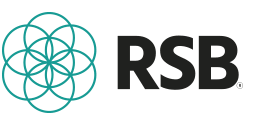RSB looks to the future with key aviation players

The RSB Annual Meeting has once again played host to aviation industry experts as RSB continues to cement its position as the standard of choice for sustainability-committed industry leaders. In 2019, RSB continued to contribute towards the ongoing development of ICAO’s CORSIA requirements as a member of the Alternative Fuels Task Force and recently ICSA (the International Coalition for Sustainable Aviation) recognised RSB in their vision for a “zero climate impact international aviation pathway towards 2050” as being an example of a best-in-class sustainability certification standard. Continuing our engagement with the industry, we participated in a key SAFUG (Sustainable Aviation Fuel Users Group) meeting and hosted a lunch for aviation leaders as part of the IATA Alternative Fuels Symposium.

As the year drew to a close, we were thrilled to host another small forum as part of our 2019 Annual Meeting which saw key experts from the aviation sector being quizzed by the moderator Christopher Surgenor, editor and publisher of the magazine Greenair Online about key trends in the Sustainable Aviation Fuels (SAF) ecosystem.
The panel was opened by Jef de Vries from SkyNRG and Sam Edwards from Skyscanner who shared information about SkyNRG’s Board Now initiative, which allows corporate customers to decrease their company’s emissions by directly investing in SAF development. Board Now helps to move beyond the debate and look to real solutions with the opportunity to invest directly in what will guarantee tangible carbon reductions. A lively discussion followed about the role of individual travellers in decarbonising aviation, and whether it is realistic to expect consumers to pay for carbon offsets despite evidence that only a small number of consumers actually pay a premium for low carbon flights (between 1-5%). Would it be an option to pass the premium to luxury flights only – such as business and first class?
The next discussion brought together Adrian Gane from Etihad and Christie Burley from airline group IAG, which represents a number of airlines including British Airways and Iberia and Vueling, to discuss about the role of airlines in SAF development. Etihad provided insight into the innovative SAF projects in Abu Dhabi, which integrates food and fuel production and is currently seeking investment to scale, while IAG provided insight into the UK project in partnership with Velocys which will produce SAF out of household waste. Christie confirmed the importance of an enabling policy environment to incentivise SAF production.
“This year’s meeting made clear that the assurance of sustainability offered by RSB is more important than ever in the face of increasing challenges to the earth’s resources and climate. It was truly inspiring to see the energy and commitment of the diverse group of stakeholders gathered in Berlin last week and to hear real-world experiences in using the RSB Standard for new supply chains and products.”
Laurel Harmon, VP: Government Relations, LanzaTech
Dr Laurel Harmon from Lanzatech joined Stéphane Thion from Total in discussing the challenges with bringing SAF production from pilot to scale. Dr Harmon reminded the audience how Lanzatech started with an idea, which then took over twelve years to realise into commercial production. A key ingredient was the education of the market and policymakers about their technology and the potential significant reductions in GHG emissions. Total stressed the importance of collaborations within the industry in a pre-competitive space to tackle together the challenge of economically turning biomass feedstock into hydrocarbon molecules, while reminding the audience that electricity will not be a viable option for aviation for still a long time.
The session ended with an open exchange of views between leading aircraft manufacturers Boeing and Airbus, represented by Onofre Andrade and Steven La Moing, around the need to future-proof feedstock by working with the RSB in ensuring sustainable supply of feedstock for SAF refineries.
